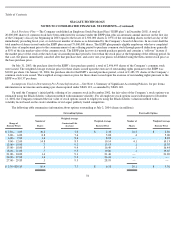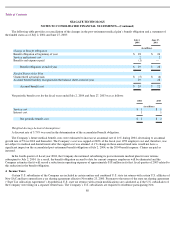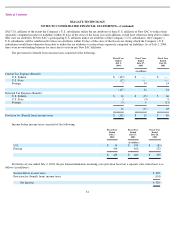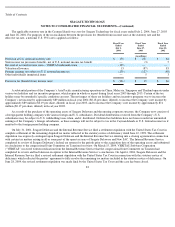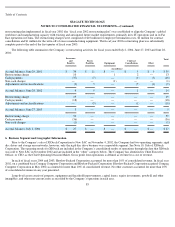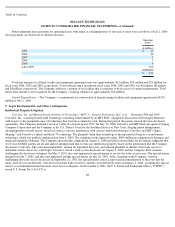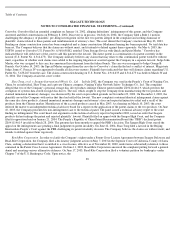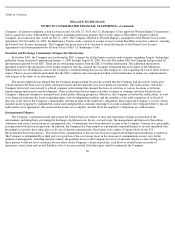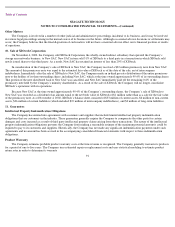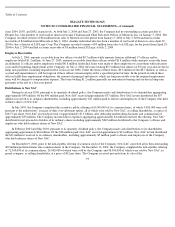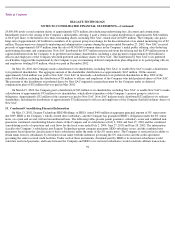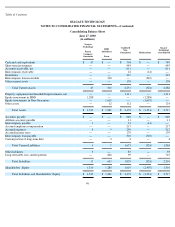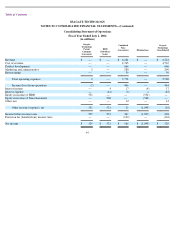Seagate 2003 Annual Report Download - page 88
Download and view the complete annual report
Please find page 88 of the 2003 Seagate annual report below. You can navigate through the pages in the report by either clicking on the pages listed below, or by using the keyword search tool below to find specific information within the annual report.
Table of Contents
SEAGATE TECHNOLOGY
NOTES TO CONSOLIDATED FINANCIAL STATEMENTS—(Continued)
7. Equity
Share Capital
The Company’s authorized share capital is $13,500 and consists of 1,250,000,000 common shares, par value $0.00001, of which
459,595,663 shares were outstanding as of July 2, 2004 and 100,000,000 preferred shares, par value $0.00001, of which none were issued or
outstanding as of July 2, 2004.
Common shares —Holders of common shares are entitled to receive dividends and distributions when and as declared by the Company’s
board of directors (the “Board of Directors”). Upon any liquidation, dissolution, or winding up of the Company, after required payments are
made to holders of preferred shares, any remaining assets of the Company will be distributed ratably to holders of the preferred and common
shares. Holders of shares are entitled to one vote per share on all matters upon which the common shares are entitled to vote, including the
election of directors.
Preferred shares —The Company is authorized to issue up to a total of 100 million shares of preferred stock in one or more series,
without stockholder approval. The Board of Directors is authorized to establish from time to time the number of shares to be included in each
series, and to fix the rights, preferences and privileges of the shares of each wholly unissued series and any of its qualifications, limitations or
restrictions. The Board of Directors can also increase or decrease the number of shares of a series, but not below the number of shares of that
series then outstanding, without any further vote or action by the stockholders.
The Board of Directors may authorize the issuance of preferred stock with voting or conversion rights that could harm the voting power
or other rights of the holders of the common stock. The issuance of preferred stock, while providing flexibility in connection with possible
acquisitions and other corporate purposes, could, among other things, have the effect of delaying, deferring or preventing a change in control of
the Company and might harm the market price of its common stock and the voting and other rights of the holders of common stock. As of July
2, 2004, there were no shares of preferred stock outstanding.
Distributions
During fiscal year 2004, pursuant to its quarterly dividend policy, the Company made cash distributions to its shareholders aggregating
approximately $90 million, or $0.20 per share. Of the $90 million paid, New SAC received approximately $57 million. New SAC in turn
distributed the $57 million it received to its ordinary shareholders, including approximately $11 million paid to officers and employees of the
Company who held ordinary shares of New SAC (see Note 13, Related Party Transactions—Distributions to New SAC).
8. Commitments
Leases —The Company leases certain property, facilities and equipment under non-cancelable lease agreements. Land and facility leases
expire at various dates through 2027 and contain various provisions for rental adjustments including, in certain cases, a provision based on
increases in the Consumer Price Index. All of the leases require the Company to pay property taxes, insurance and normal maintenance costs.
87



